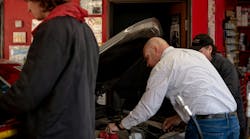One of the largest and most complex recall efforts in auto industry history is growing larger and more complex.
After starting small, the Takata airbag inflator recalls have spread like a virus to infect 12 automakers and as many as 25 million U.S. vehicles. U.S. regulators have stepped in to help speed up repairs and funnel a finite supply of replacement parts to the vehicles considered most at risk of an inflator rupture.
Even though the recalls have been proceeding in earnest for more than a year, millions of inflators remain unfixed.
According to the National Highway Traffic Safety Administration, about 31 percent of all recalled Takata inflators had been repaired as of Feb. 12, up from 18 percent in mid-August.
The challenges, and human costs, continue to mount. A 52-year-old man was killed in December in South Carolina when his 2006 Ford Ranger struck a cow on the road, and the airbag exploded upon deployment. It was the 10th death linked to the faulty inflators, and it prompted an expansion of the recalls that added 5 million inflators to the tally.
And Takata is facing a daunting ultimatum from NHTSA: Prove by the end of 2019 that its ammonium nitrate inflator propellant is safe, or be forced to recall every ammonium nitrate inflator ever made.
To-do list
The Takata airbag inflator recalls have expanded bit by bit since they first were issued in 2008. They now include some 29 million defective inflators in vehicles in the U.S. spanning the 2000 to 2015 model years. Some vehicles have been recalled more than once because of early replacement parts from Takata that may carry the same defect. And many vehicles need both driver- and passenger-side inflators replaced. Those factors make it difficult to pinpoint the exact number of vehicles involved. Here's a look at each manufacturer's exposure, based on recall reports filed with the National Highway Traffic Safety Administration, automakers' estimates of how many of their vehicles are affected and estimated completion rates for recall work.
This article originally appeared on Automotive News.





